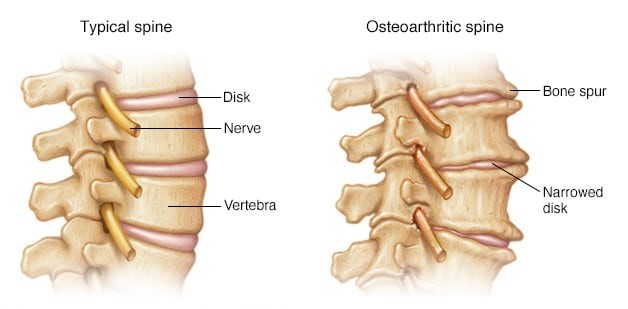Osteoarthritis symptoms often develop slowly and worsen over time. Signs and symptoms of osteoarthritis include:

Osteoarthritis occurs when the cartilage that cushions the ends of bones in your joints gradually deteriorates. Cartilage is a firm, slippery tissue that enables nearly frictionless joint motion.
Eventually, if the cartilage wears down completely, the bone will rub on the bone.
Osteoarthritis has often been referred to as a wear and tear disease. But besides the breakdown of cartilage, osteoarthritis affects the entire joint. It causes changes in the bone and deterioration of the connective tissues that hold the joint together and attach muscle to bone. It also causes inflammation of the joint lining.
How is osteoarthritis treated?
There is no cure for osteoarthritis. Mild to moderate symptoms are usually well managed by a combination of pharmacologic and non-pharmacologic treatments. Medical treatments and recommendations include:
Surgery may be helpful to relieve pain and restore function when other medical treatments are ineffective or have been exhausted, especially with advanced OA.
The goals of treatment are to:
The type of treatment regimen prescribed depends on many factors, including the patient’s age, overall health, activities, occupation, and severity of the condition.
Osteoarthritis is a degenerative disease that worsens over time, often resulting in chronic pain. Joint pain and stiffness can become severe enough to make daily tasks difficult.
Depression and sleep disturbances can result from the pain and disability of osteoarthritis.

HealthNeutron is a preventive healthcare provider and digital healthcare solution that brings doctors, lab technicians, and pharmacists to patients.
HealthNeutron © 2025 | All Rights Reserved.
Made with ❤️ by Pearson Consultancy